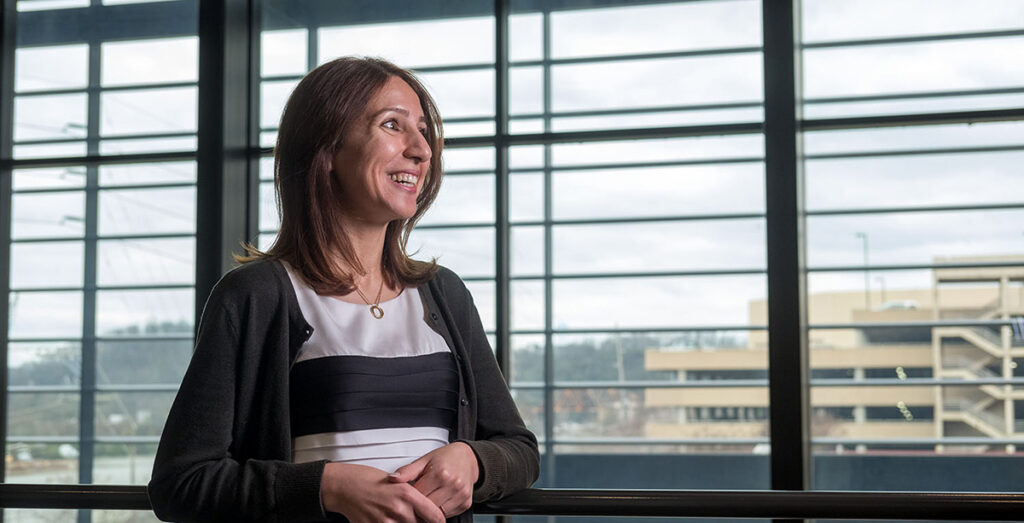Sepsis acquired in clinical settings threatens the lives of tens of millions of people worldwide every year. The condition, in which the body responds to an infection by essentially going into overdrive, inadvertently attacks the body by overzealously releasing chemicals to defend it.
A World Health Organization study found that more than 44 million people had sepsis in 2017, causing 11 million sepsis-related deaths and leading to other significant adverse events such as limb amputations.
Sepsis is treatable if caught in time, but many patients show no signs of the condition until it’s too late in the cycle to cure effectively and expeditiously.
“You have to catch it early,” said Anahita Khojandi, Heath Endowed Faculty Fellow in Business and Engineering and associate professor in the Department of Industrial and Systems Engineering at the University of Tennessee, Knoxville. “With our new predictive tools, we think health care professionals will be able to catch it at least four to six hours sooner, leading to more effective treatment and better health outcomes. That might not sound like a lot of time, but sepsis moves so rapidly that four to six hours could be the difference between life and death.”
Khojandi and a multidisciplinary team of researchers from UT hypothesized that by building out datasets developed from electronic health records and analyzing them for patterns among patients who later developed sepsis, they would be able to predict the onset of the condition. An ISE colleague—Xueping Li, Dan Doulet Faculty Fellow and professor—was able to connect the team to an initial set of data owners to get them started.
“He had a colleague in the Center for Health Systems Innovation at Oklahoma State University who had access to electronic health records data that we needed to start on this journey of building models for early sepsis prediction,” Khojandi said. “From there, we started learning more about the power of electronic health records data and their potential shortcomings. We were able to access additional datasets and to perform a series of studies, each building on the previous one, until we could finally address the problem in a holistic way.”
One of the key initial shortcomings was the lack of granularity in some of the electronic health records. Fortunately, UT–Oak Ridge National Laboratory Governor’s Chair for Biomedical Informatics Robert Davis in the UT Health Science Center was able to help the team address this key challenge by providing Khojandi with a novel dataset of patients’ vital readings, such as heart rate and respiratory rate, collected continuously from ICU monitors. The new dataset allowed the team to develop a powerful AI framework by leveraging time series–based modeling and sequential decision-making approaches. In their latest work, they developed a novel approach that allows the AI model to peek into the hidden health state of a patient in real time while accounting for the patient’s underlying disease progression. The model can then construct an accurate picture of the patient’s state, improving the decision-making process.
This recent study from the Khojandi team received the prestigious Harvey J. Greenberg Research Award from the INFORMS Computing Society, which honors research excellence in the field of computation and operations research applications, especially those in emerging application fields.
Khojandi said collaboration is extremely important to her success, since hard problems often require multidisciplinary expertise and methods. She added that researchers from engineering, mathematics, and health care—including medical doctors and nurses, social workers, and other professionals—need to work together to make sure they look at problems holistically in order to develop impactful solutions.
Future Directions for AI
The sepsis project demonstrates the potential power of AI in medical applications. Khojandi is now teaming up with new collaborators to apply her expertise and tools to solve different problems.
She is working with Vasileios Maroulas, assistant vice chancellor, deputy director of the AI Tennessee Initiative, and a professor of mathematics, and Scott Emrich, associate professor of computer science. They are leveraging data in electronic health records, including physiological and imaging data, to develop models that help with treatment planning.
For example, Maroulas and Khojandi are working with Jason Buehler and Patrick McFarland in the Department of Anesthesiology at the UT Medical Center to develop AI models that can predict opioid-induced ventilatory insufficiency in patients in hospital settings. They are also collaborating with Stefanos Boukovalas and Devin Clegg from the Department of Surgery at UTMC to predict the risk of lymphedema following breast cancer and identify additional factors to help guide treatment planning. Emrich and Khojandi are working with Jill Maples, Kimberly Fortner, Nikki Zite, and Callie Reeder—all from the Department of Obstetrics and Gynecology at UTMC—to use AI to improve maternal and fetal care. In addition to their positions at UTMC, Buehler, McFarland, Boukovalas, Clegg, Maples, Zite, and Reeder are also faculty members of UT Health Science Center’s College of Medicine.
“Overall, I sincerely believe that our models can revolutionize health and health care and provide great support to health professionals caring for patients at the bedside; however, care must be taken when developing the models to make sure they are equitable, unbiased, and practical and their results remain reproducible,” Khojandi said. “So we have a long road ahead of us, but I’m optimistic and excited about what the future holds.”
While the study is just the first step, it has established a foundation for future successes—all made possible by the spirit of collaboration and a commitment to ensuring that UT research is making life and lives better.
